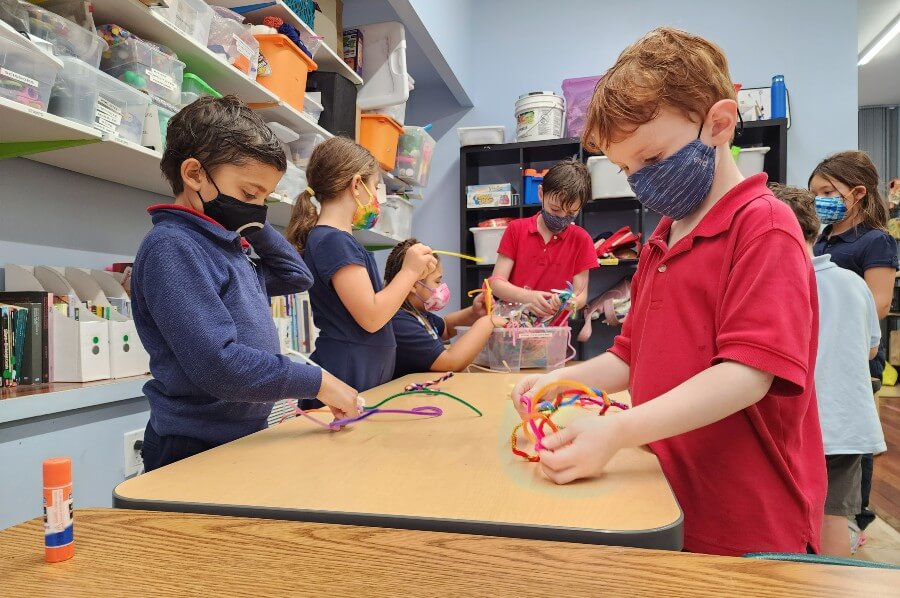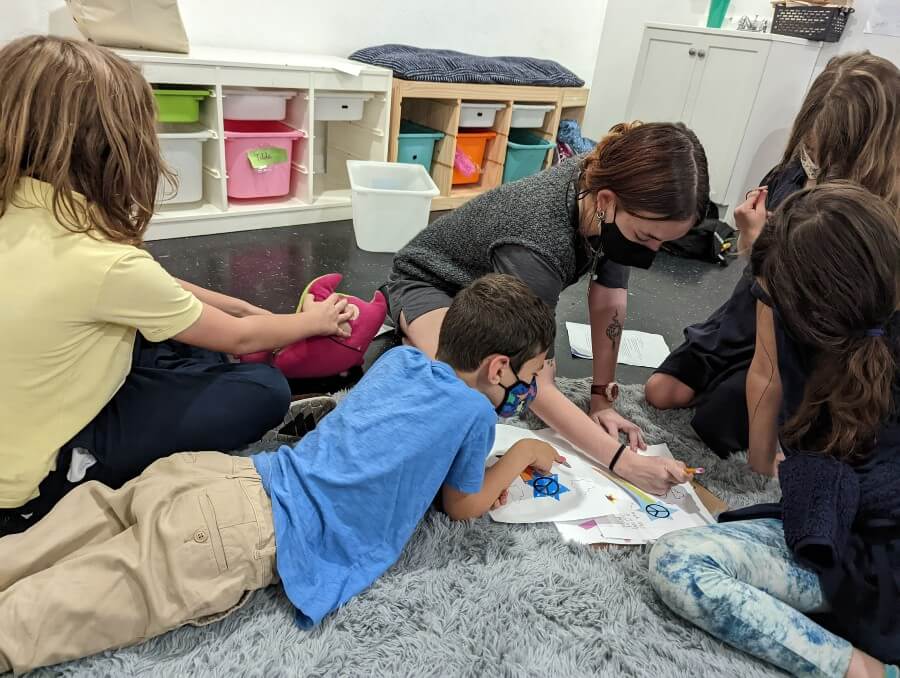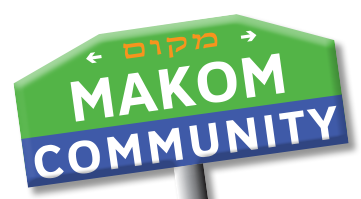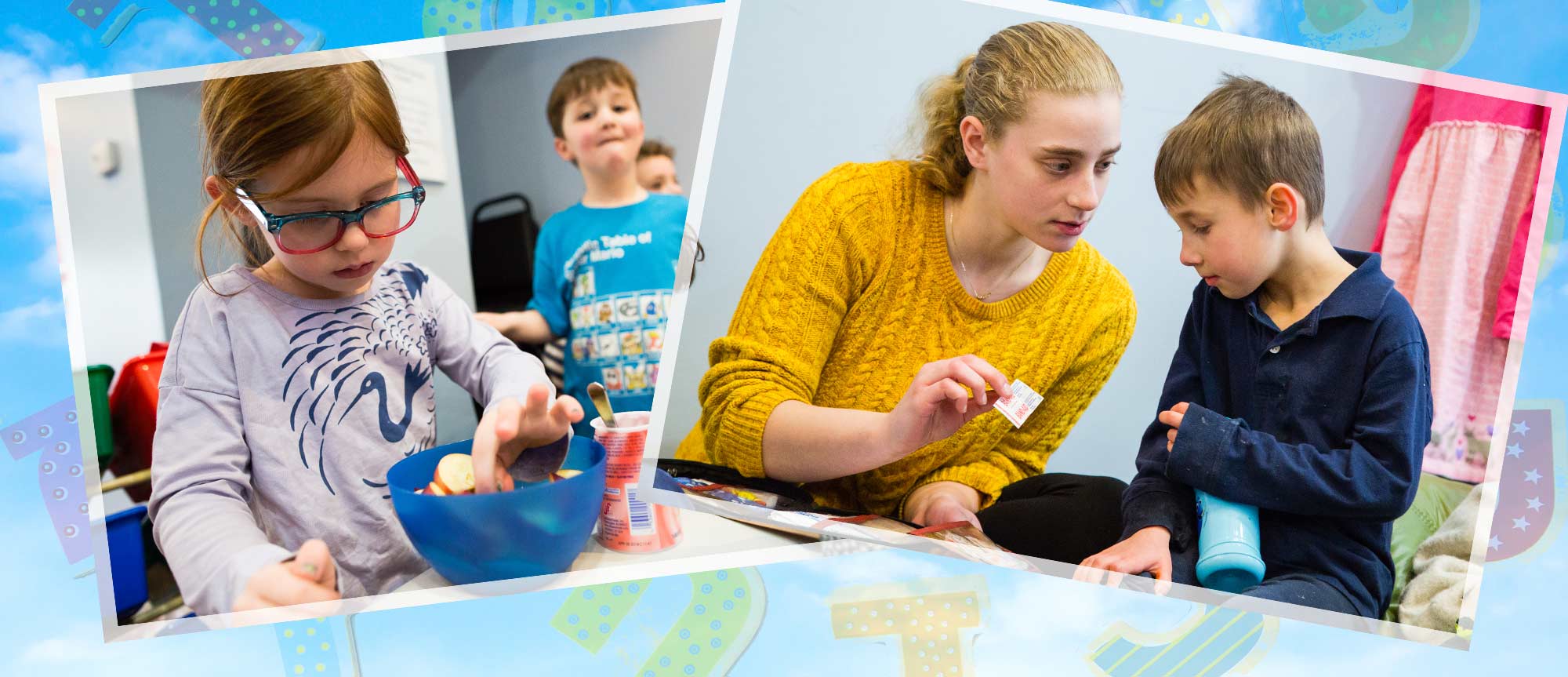How We Work
A Typical Day at Makom Community
We fit Jewish education into the busy lives of urban families. We pick children up Monday through Friday from area elementary schools, on a flexible schedule. They walk or take group travel on SEPTA back to Makom Community at 24th and Washington Ave, for a healthy snack and a whole afternoon of Jewish learning, until parent pickup by 6:00pm. While they are with us, children also have time with friends and mentors and can begin homework or have some much needed downtime with their favorite book.
Our Innovative Pedagogy- Jewish Placemaking
Jewish Placemaking has a few key goals:
- To hear the needs of one another and ourselves and create intentional and experiential learning environments.
- To collaborate as one community of kiddos and educators as co-creates of our physical space.
- To embrace our makom (place) as a safe place where we grow into the people we want to be.
- To invite Jewish wisdom into ourselves, our homes, our schools, and our city to shape the world we want to be in.
- To embrace families as interpreters of Jewish wisdom, regardless of previous Jewish experience, in building our physical and interpersonal community.
Sample Schedule & Curriculum Overview
TEXTploration
We explore a section of Jewish text in a variety of ways! Often, kids will draw, sculpt, or build what they hear. Sometimes, learners act to bring the text to life or listen to our educators dynamically share the text. We start with an opening activity to anchor the big ideas in the text in our lived experience. Then we engage in both discussion and activities that delve into the questions we take from the text. This helps us understand how we can apply this bit of Jewish wisdom to our lives.

Shulchanot Avodah – Project Centers
We meet learners where they are! We know not every child processes the same way or wants to engage with the same activity. At Shulchanot Avodah (project centers) everyone gets to choose how they’d like to play with the text or pursue their Hebrew learning. One child busily collages a self-portrait. Two other learners use natural materials to build representations of scenes from a text. Another child flips from image to image online as they imagine what the flora and fauna might have looked like in an earlier time. Another kid reads aloud for a group from a children’s book and leads a discussion on how the story connects back to the text we learned that day. One learner sits quietly on her own practicing Hebrew learning with a matching game or by tracing letters in colorful sand. Educators move from child to child to find out whether they can help with the project that a particular student is working on.
In Shorashim (1st-2nd grade) and Nitzanim (3rd-5th grade) our students are immersed in Project-Based Learning (PBL). PBL projects last the length of one whole unit and conclude in a Family Learning Showcase. Students engage in real world and meaningful projects. They work towards answering a driving question that results in authentic project creation. Through PBL, student inquiry, voice and choice, and reflection come together in a model that then invites families in to carry the learning from Makom to their homes.
Tefilah: Prayer, Music, and Movement
The Garinim (K-1st graders) and Shorashim (1st-2nd graders) clean up their projects and move to the Tefilah space as we sing a niggun (wordless tune). The Nitzanim (3rd-4th graders) and Anafim (5th-7th graders) find their siddurim and get settled in a chair or on the floor. We sing prayers and move with the music—jumping, dancing, and contextualizing the text of prayers through the use of gestures and sign language to provide deeper understanding. Many of the students volunteer to lead parts of the prayer service, but some do not. Some kids sing along loudly, and others don’t sing and instead move their bodies to the prayers or sit in a cozy corner.
Ivrit, Hebrew
Makom Community’s pedagogy, Jewish Placemaking, creates an immersive environment where Jewish texts, rituals, and customs are woven into our environment and how we interact with each other. Hebrew, including learning to decode letters and sounds with an eye toward text study and Tefilah reading rather than conversation, is part of that environment. Through play, discussion, the dissection of key words in text study, and the joyful, confidence-building Tefilah experience, we braid Hebrew learning into Makom learning everyday. Tefilah is rooted in communal connection and ancestral connection by singing as a means of engaging with ancient liturgy and developing mindfulness. Kids have a strong sense of ownership of their Jewish environment and build a sense of ownership around the prayers, vying for a turn to lead elements of Tefilah. Just as Torah is ours to understand, question, and to find personal meaning in, so is Tefilah. As learners discover that Tefilah can ground them in their Jewish environment, they will express when they are ready to master prayers. Learners begin to master the aleph-bet in Shorashim (1st-2nd grade) and full Hebrew prayers in Nitzanim (3rd-4th grade). Each learner constructs their own path toward Hebrew mastery. (Note: Mastery is what we call the process of a learner being able to read, lead, and make personal meaning out of a prayer.)


